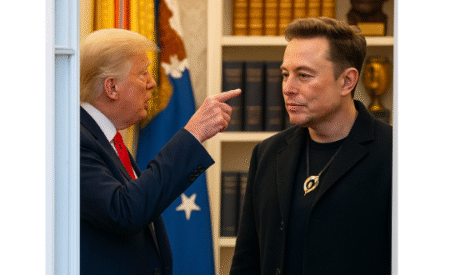China has launched a strategic countermeasure in response to former US President Donald Trump’s threats of increasing tariffs, signaling its refusal to back down. With a plan to weaken the yuan and the restriction of critical rare metal exports, China is positioning itself to cushion the economic impact of the potential US tariff hikes while maintaining its competitive edge in global markets.

Rare Metal Ban: A Direct Blow to US Industries
China, the world’s leading producer of rare metals, has already banned the export of gallium, germanium, and antimony to the United States. These metals are vital for the technological and defense industries, making the ban a significant challenge for US production and innovation. Analysts estimate this restriction could cost the US economy over $3 billion annually.
This move underscores China’s intent to protect its interests as tensions escalate. It demonstrates its willingness to leverage its dominant position in the supply of rare resources to counterbalance economic pressure from Washington.
A Tactical Shift in Currency Policy
China’s second line of defense against US tariffs lies in its currency policy. The Politburo, China’s central decision-making body, has indicated that it may allow the yuan to depreciate further in 2025. A weaker yuan would make Chinese exports cheaper, thereby reducing the impact of US tariffs.
Reports suggest that the People’s Bank of China (PBOC) is prepared for the yuan to drop to 7.5 per dollar, marking a potential decline of 3.5% from its current level of 7.25. This decline would follow similar currency adjustments during Trump’s first presidency, when the yuan weakened by more than 12% in response to US trade policies.
Economic Implications of Yuan Devaluation
Weakening the yuan provides China with a dual advantage. First, it boosts export earnings, as Chinese goods become more competitively priced in international markets. Second, it mitigates domestic deflationary pressures by increasing the cost of imports, although it could also drive inflation if import costs rise too steeply.
Also Read : Assad Regime Collapse: Syria Enters a New EraEconomists forecast that the yuan could average 7.37 per dollar by the end of 2025, further bolstering China’s position in global trade. In past trade disputes, this currency strategy helped Beijing weather economic turbulence while retaining its role as the world’s manufacturing powerhouse.
Trump’s Tariff Plans: A Double-Edged Sword
Former President Donald Trump has proposed a blanket 10% tariff on all imports to the US and an aggressive 60% tariff specifically targeting Chinese goods. These measures, aimed at reshoring manufacturing jobs and reducing trade deficits, could face significant challenges if the yuan devaluation reduces their effectiveness.
China’s currency strategy also feeds into its broader policy shift. During the Politburo meeting, Chinese officials pledged a looser monetary stance—the first of its kind in 14 years. This approach is designed to support domestic economic growth while responding effectively to external shocks, such as heightened tariffs.
Global and Domestic Repercussions
If China weakens the yuan, the impact will ripple across global markets. Cheaper Chinese goods could capture a larger share of international markets, potentially undermining competitors. However, the strategy is not without risks. A devalued yuan raises the cost of imports, which could lead to inflationary pressures in China’s domestic economy.
On the other hand, the United States faces a precarious balancing act. While higher tariffs might protect domestic industries, the ban on rare metal exports and cheaper Chinese goods could hurt key sectors reliant on affordable materials and components.
China’s Growing Confidence in Economic Maneuvering
China’s recent decisions reflect its growing confidence in countering US policies through tactical economic measures. The rare metal export ban, combined with its flexible currency policy, highlights a strategic approach that prioritizes resilience and adaptability.
By leveraging its control over critical resources and adopting a carefully calculated monetary stance, China seeks to blunt the effectiveness of tariff policies while maintaining its dominance in global trade.
Conclusion
As US-China trade tensions escalate, both nations are deploying aggressive strategies to assert their economic priorities. China’s ban on rare metal exports and its potential devaluation of the yuan serve as stark reminders of the intricate balance of global power in modern trade.
For now, China appears determined to challenge the status quo and mitigate the impact of US tariffs. However, as these measures unfold, both countries must navigate the complex economic and geopolitical consequences of this prolonged trade conflict











